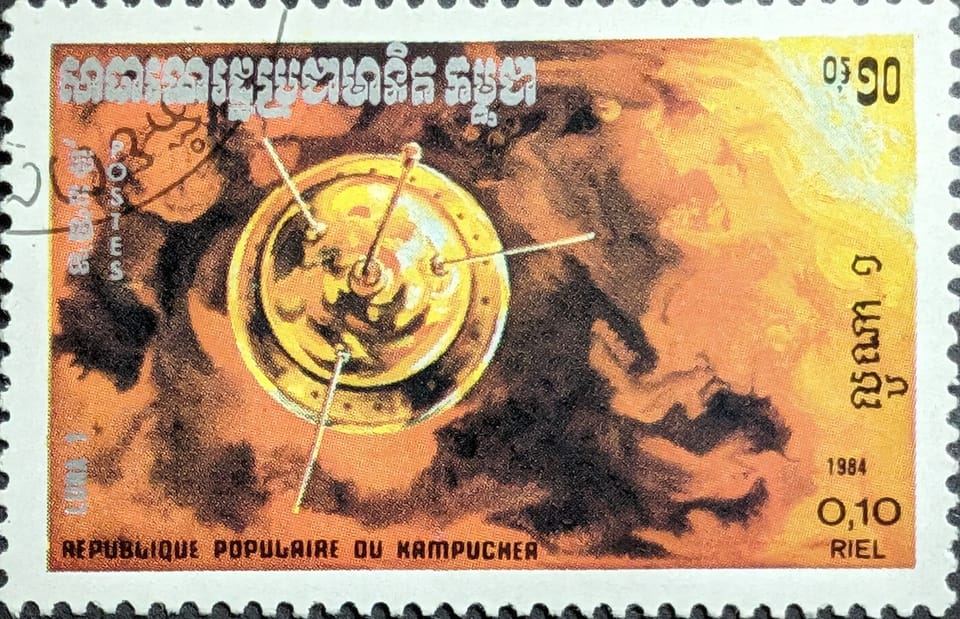Civil Space, Tinkerbell, Ice Cream Cones, and the General Public

SpaceNews posted an editorial highlighting some of the space industry's wrongheadedness, well-encapsulated by the title ”What people don’t get about space.” My analysis doesn’t pick on the author or the article but instead picks at the typical well-worn arguments used to justify more investment emphasis in the space industry (specifically, civil space).
The first argument is that space is essential, but regular people don’t seem to recognize that, and there is a need to change that somehow. The second is space’s ubiquity in the lives of regular people and the need for those people to acknowledge that. If the general public realizes just how vital and ubiquitous space is, it will go pound on politicians’ doors to get more funding for space. Many civil space organizations and proponents seem to believe this.
Clap for Space
Space is important, but who should it be important to? According to the author, space is so crucial that regular people (the general public) should know how it is integrated with their activities. If people aren’t aware of space’s importance, “[t]his lack of awareness is dangerous for the space sector, particularly public space agencies, that increasingly need to justify their existence and funding in an era of commercial space ventures and climate change restrictions.”
According to the author (and other proponents), space should be important to regular people because it’s essential to the space sector. This dogma of needing the general public to acknowledge space’s importance is akin to Peter Pan asking the audience to clap to bring Tinkerbell back. If people don’t clap (acknowledge space’s importance), then space is unimportant and doesn’t exist.
This argument also refers to that decades-old “self-licking ice cream cone” justification for space. Space is important because it is space. Space is an importance to itself. Therefore, anything in space is important. Services enabled by space are important. Products from space are important. Space programs are important because they have the word “space.” Bow down to almighty space.

However, space can be essential and does not require regular people to acknowledge the little bit of space in their lives. Indeed, there are considerations for working in space that people on Earth never needed to worry about before. This is the challenge for those who want space to be acknowledged in every aspect of humankind’s activities on Earth: space technology works, but it works so well that it’s invisible. That’s good news, and that’s how it should be.
Augmenting Space
There are many other space spinoff examples less problematic and banal than the ones mentioned in the article. I’ve written about a few for the Space Foundation. Take MDA’s Canadarm technology being used in neuroArm for surgeries. There’s also the civil space connection to that story, with Canada as a member of the European Space Agency’s governing council. That is not a new development, either. This ten-year-old YouTube video talks about neuroArm. Or using synthetic aperture radar (SAR) data from satellites to monitor ground stability under buildings (or before constructing them).
Instead, the article brings up examples that even uneducated entrepreneurs use in their pitches: global positioning system (GPS) satellite signals, dedicated satellite communications for banks and power utilities, and smartphone mapping software that uses satellite imagery. Almost none involve civil space agencies (maybe some imagery). Regular people use GPS (a military-operated system) and Google Maps to navigate to the local Aldi or the next rest stop. Banks and power utilities rely on satellite communications (name your company), with banks also relying on precision timestamps.
The problem with those examples is that they have been available for decades. GPS became operational in 1995, nearly thirty years ago. Satellite communications have been around for over 50 years and have been commercially available for about as long. Satellite-provided imagery has been around for at least 50 years. But, except for satellite communications, the explosion in commercial usage of these products and services happened much later.
The advent of a digital multitool–the smartphone–is a primary reason for the increased use of space sector products and services. Some government-backed initiatives, such as opening up accurate GPS to the public, also helped. However, one only has to look around to see the smartphone's ubiquity and its impact on society.
Of course, it’s not just the smartphone that increases space’s value to the general public. The internet and other terrestrial communications networks (which rely on timestamps) also make the smartphone that much more useful. Altogether, smartphones allow people to download apps such as Google Maps (although that’s usually the default) and help update the map data through small updates, including traffic and position updates.
Do regular people think excessively of a cellphone network’s importance in their daily lives? Do they think about the networking technology and protocols used to watch YouTube on the phone while sitting in the stall? Do they care about how banks or utilities communicate? Is the general public pushing politicians to increase Federal Communications Commission funding? It’s challenging to get people excited about things that are essentially infrastructure in nature. And, based on experience, people remain uninterested until it stops working.
Potholes on the road, for example, attract the general public’s attention. Slowdowns and stops in internet service drive people to distraction. Unreliable electrical power or water services aren’t just inconveniences; they can be the difference between life and death. Even without clapping from customers, those services are valued.
Space Industry’s Perception and the Public’s Reality
These arguments, the industry’s history, and the increasing use of its products and services point to dissonance. To say that the general public doesn’t understand the benefits of the space sector’s offerings (after decades of use in some cases) and acknowledging their increased usage of the same is a contradiction. Blaming the customer is never a good idea, particularly when it’s misplaced. Especially when believing that the space sector will receive more funding if the general public understands where their benefits are coming from.
And yet…and yet, wherever there is dissonance and contradiction–the incongruities–in a market, there are business opportunities (space is a business, after all). There are at least two incongruities (based on Peter Drucker’s definitions). The most obvious one is the incongruity between reality and assumptions about it.
The assumption appears to be that the “general public” (customers) doesn’t understand the benefit that space brings them. The reality is that the general public is using space offerings to a degree unheard of ten years ago. Since reality always wins over assumptions, it would be well to re-evaluate this particular assumption. If more people are using something, they value it. They are paying for using space offerings somehow. That disconnect should be examined if that money isn’t making it to the space sector.
There’s also the incongruity of perceived and actual customer values and expectations. Usually, this means that customers might place a higher or different value on an offering than the company capable of providing it believes they will. In arguing about space’s importance, space industry experts and stakeholders seem to think customers are somehow misplacing the value of space products and services. Instead of believing either is important because they are from space, customers use them because they make their lives easier.
However, none of this is relevant to the article’s goal, which is to maintain or increase public funding of space agencies. That’s a different challenge, requiring political maneuvering and capital. The suggestion to educate politicians about space activities isn’t wrong, but if politicians worldwide are the same as politicians in the U.S., then it won’t help, either. Generally, politicians don’t care about how it all works unless the information gives them leverage or when conflict breaks out.
NASA, for example, is a PR machine that generates all sorts of information about how space benefits U.S. citizens and the government. The U.S. Department of Defense, on the other hand, barely advertises any benefits to the general public. Which one usually gets a bigger space budget? If you answered NASA, then you should have answered the DoD instead. And that’s not including the DoD’s “black” space budget, which is a significant number. It’s no accident that the U.S. DoD continues investing in GPS. That system is at least as valuable to the military as to the commercial sector.
The political aspect is a different discussion. But the statement and title—“What people don’t get about space”—echo an assumption that has long been anathema (and frankly, unrealistic) to space industry growth: if regular people only understood how important and special space is and why, they’d pressure politicians to increase civil space budgets. However, the general public’s use of space products and services shows that they value space. It’s not the general public’s fault that it’s largely using products and services unaffiliated with civil space agencies.
Maybe that’s the point, though. Any civil organization’s purpose is to provide communities with something they need, be it law enforcement, researching more advances, water treatment, etc. Most get the necessary funding to fulfill these needs without people clapping. It’s not the general public’s fault if some civil space agencies don’t get that.
If you liked this analysis (or any others from Ill-Defined Space), I appreciate any donations (I like taking my family out every now and then). For the subscribers who have donated—THANK YOU from me and my family!!




Comments ()